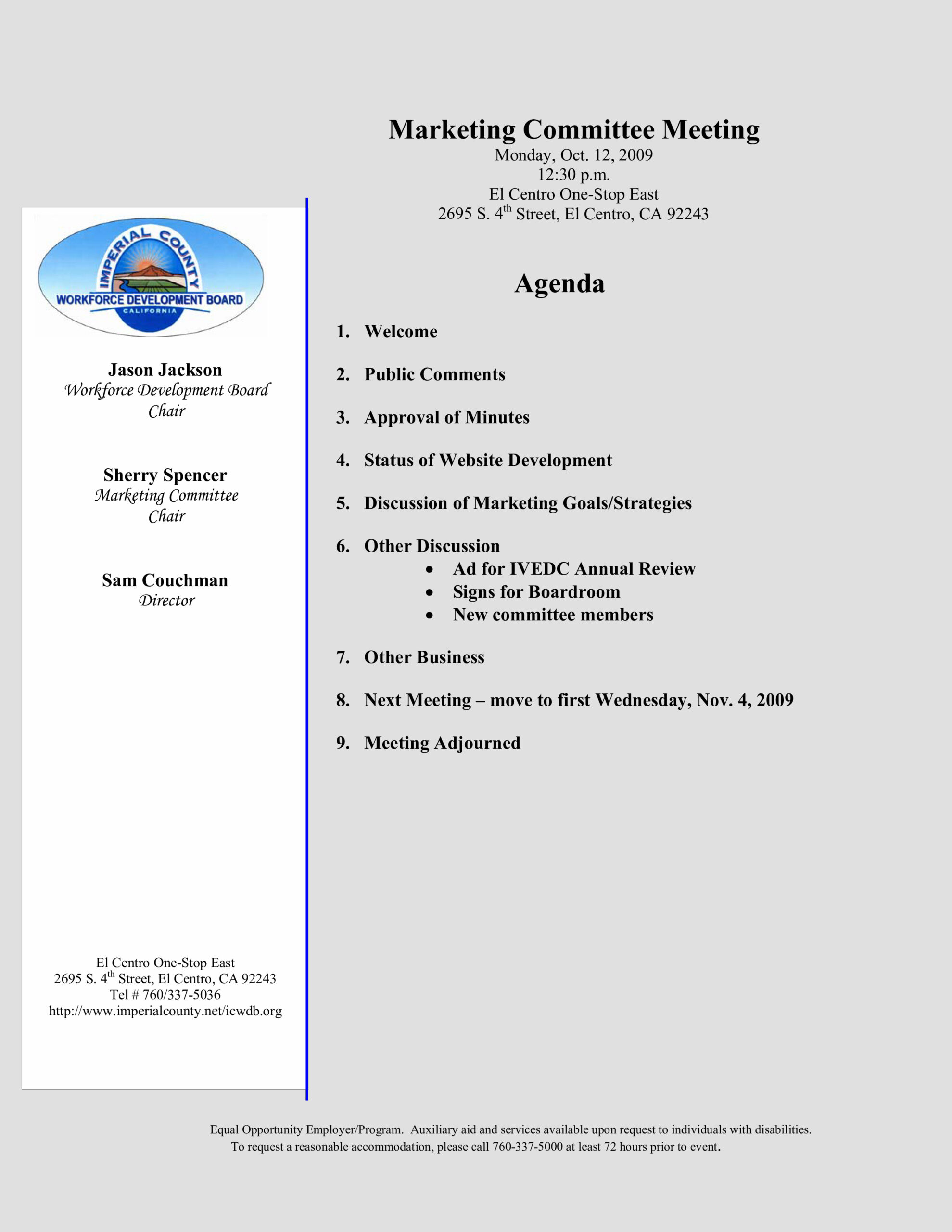What is a Committee Meeting Agenda?
A committee meeting agenda serves as a roadmap for the discussions and decisions that take place during a committee meeting. It outlines the topics to be covered, the order in which they will be discussed, and the time allocated for each item. A well-structured and thought-out agenda ensures that the meeting stays on track, encourages participation from all members, and ultimately leads to productive outcomes.
Whether you are a committee chairperson, a secretary, or a member of a committee, understanding how to create and utilize a committee meeting agenda is essential for effective and efficient meetings. In this comprehensive guide, we will delve into the intricacies of committee meeting agendas, exploring their purpose, content, and best practices.
Why Should You Use a Committee Meeting Agenda?
Committee meeting agendas serve several important purposes:
- Organization: An agenda helps to structure the meeting, ensuring that all relevant topics are covered and that the meeting stays on track.
- Preparation: By sharing the agenda with participants in advance, they have an opportunity to prepare and contribute more effectively to the discussions.
- Time Management: Agendas allocate specific time slots for each agenda item, preventing discussions from going off-topic and helping to keep the meeting within its designated timeframe.
- Accountability: Agendas provide a record of what was discussed and decided during the meeting, making it easier to follow up on action items and hold individuals accountable for their responsibilities.
Overall, using a committee meeting agenda promotes a more organized, efficient, and productive meeting environment.
How to Create an Effective Committee Meeting Agenda
Creating an effective committee meeting agenda involves several key steps:
1. Identify the Meeting Objectives
Before creating an agenda, it is essential to clarify the objectives of the meeting. What specific outcomes do you hope to achieve? Are there any pressing issues that need to be addressed? Understanding the purpose of the meeting will help you determine the topics that need to be included in the agenda.
2. Prioritize and Order Agenda Items
Once you have identified the meeting objectives, prioritize the agenda items based on their importance and relevance. Place the most critical items at the beginning of the agenda to ensure they receive sufficient time and attention. Consider the flow of the meeting and how one topic may naturally lead to another.
3. Allocate Time for Each Agenda Item
Assigning time limits to each agenda item is crucial for effective time management during the meeting. Be realistic when estimating the time needed for discussions, and try to stick to the allocated time to avoid delays or rushing through important topics.
4. Provide Sufficient Background Information
Include relevant background information or materials that participants need to review before the meeting. This ensures that everyone is well-informed and prepared to contribute meaningfully to the discussions.
5. Communicate the Agenda in Advance
Distribute the agenda to all participants well in advance of the meeting. This gives them time to review the topics, gather any necessary information, and come prepared to actively engage in the discussions.
6. Start the Meeting with an Introduction
Begin the meeting by providing a brief overview of the agenda and explaining its structure. This helps participants understand the flow of the meeting and sets expectations for their participation.
7. Follow the Agenda and Manage Time
During the meeting, strictly follow the agenda and keep discussions focused on each agenda item. As the chairperson or facilitator, it is your responsibility to manage time and ensure that all topics are adequately addressed within the allotted time.
8. Review and Summarize the Meeting
At the end of the meeting, review the key decisions and action items. Summarize the main outcomes and assign responsibilities for follow-up. This ensures that the meeting’s outcomes are documented and that everyone is clear on their next steps.
Sample Committee Meeting Agenda
Here is an example of a sample committee meeting agenda:
- Introduction and Welcome: Start the meeting by welcoming participants and providing a brief overview of the agenda.
- Review of Previous Meeting Minutes: Discuss any updates or actions arising from the previous meeting minutes.
- Financial Report: Review the financial report and discuss any budgetary matters.
- Project Updates: Provide updates on ongoing projects and discuss any challenges or concerns.
- New Business: Discuss any new items or issues that need to be addressed by the committee.
- Upcoming Events: Discuss and plan for any upcoming events or activities.
- Open Floor: Allow time for participants to raise any additional topics or concerns.
- Next Steps and Adjournment: Summarize the key decisions and action items, assign responsibilities, and adjourn the meeting.
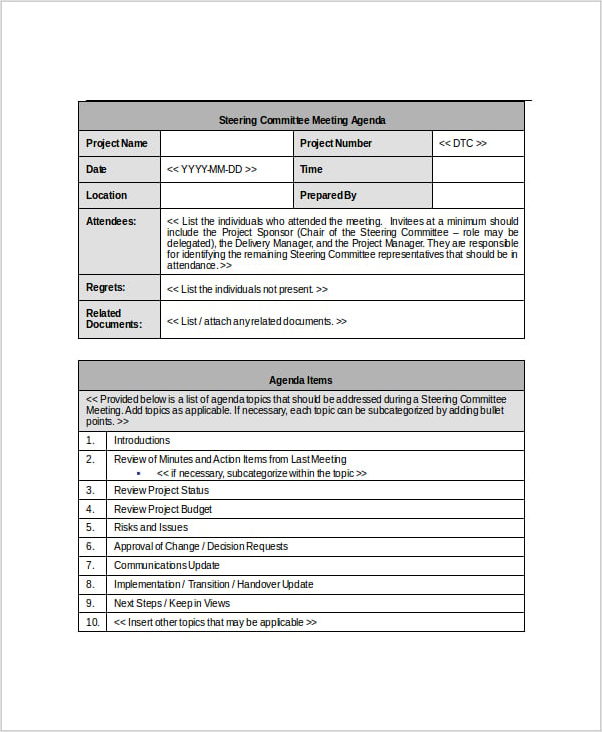
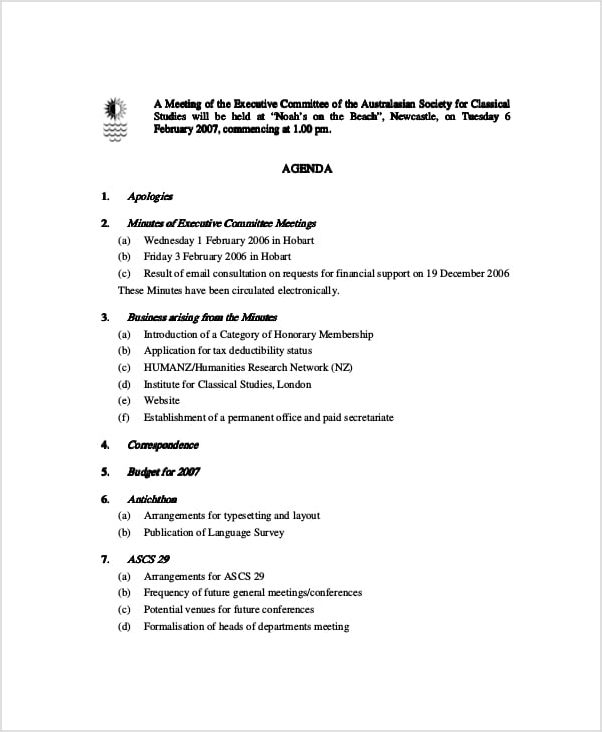
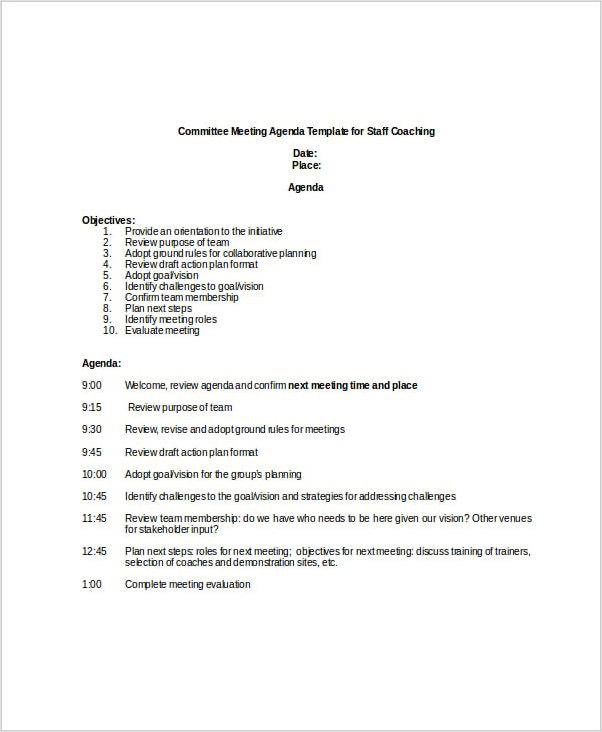
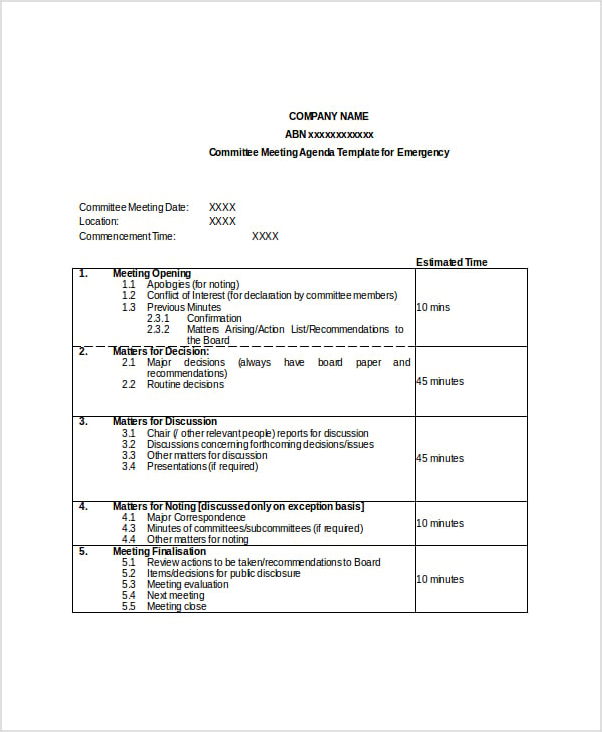
Best Practices for Committee Meeting Agendas
- Be specific and concise: Clearly state the purpose of each agenda item and provide enough detail for participants to understand the topic without overwhelming them with unnecessary information.
- Include time limits: Allocate a specific amount of time for each agenda item to keep discussions focused and ensure the meeting stays on schedule.
- Encourage participation: Consider including interactive elements in the agenda, such as brainstorming sessions or open discussions, to encourage active participation from all committee members.
- Review and adjust: Regularly review and adjust your agenda template based on feedback and the evolving needs of your committee.
- Follow up: After the meeting, distribute the meeting minutes promptly, along with any relevant materials or action items discussed during the meeting.
Conclusion
A well-structured committee meeting agenda is a vital tool for productive and efficient meetings. By following best practices and utilizing the steps outlined in this guide, you can create agendas that keep your committee on track and lead to meaningful outcomes. Remember to always be flexible and adapt your agenda as needed to accommodate unforeseen circumstances or new priorities. With careful planning and execution, your committee meetings will become more purposeful and impactful.
Committee Meeting Agenda Template Excel – Download
